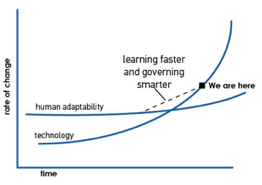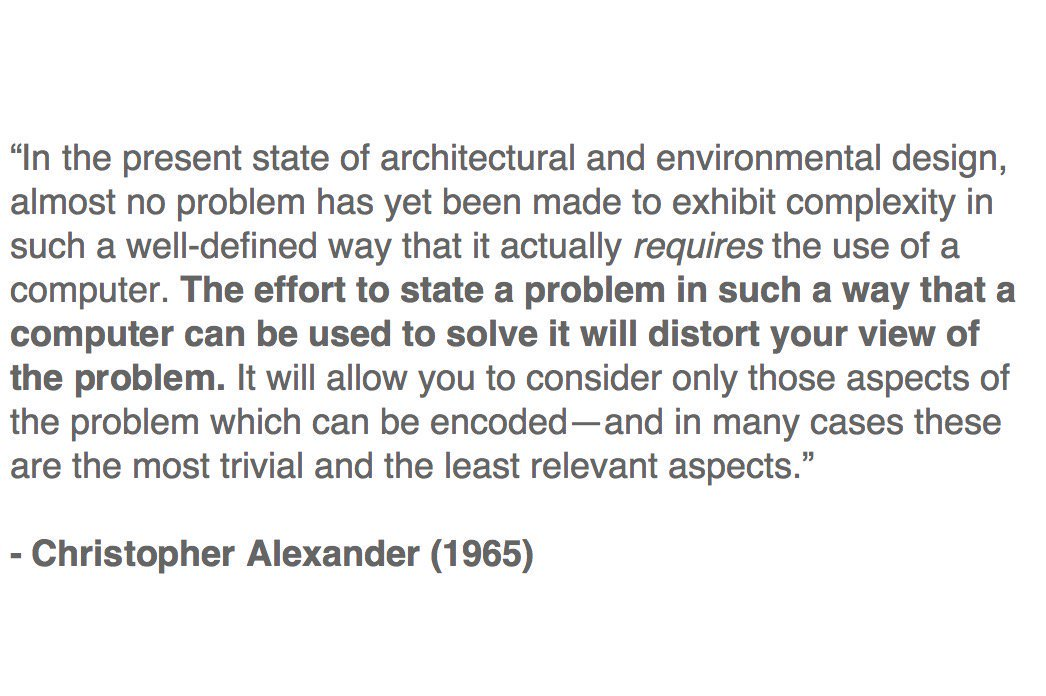Insights
We should all think together
There are big questions we should all think together, the questions like: “Where shall we go as a society?”, “What do we want from technology?”
There are many controversial issues in our societies left unsolved
Tadao Ando has designed architectures through presenting his visions for the future. His architectures show the endeavor to present themes such as the houses of origins, house of building upon what exists, and creating that which does not exist, and house of nutrition, meaning the power for continuity. He believes that the way people live can be directed a little by architecture. In a interview, he reflected his work and said “It would be nice if we all think together.”
「みんなで考えればいいなと思う」– 安藤忠雄
(“It would be nice if we all think together.” – Tadao Ando)
Every person should have a say, no one should be left behind
Everyone as citizens, no matter we are designers, engineers, policy makers or consumers, living in the society should have access to the agenda setting power and have a say on where we go as a society. The process and power should be open and participative to every citizens. With the help of today’s technology, it is absolutely possible to include every single person directly.
“I believe there is an enormous amount of intelligence in our population. I want to see prison reform led by people who have previously been imprisoned. I want to see the agenda of classes and schools led by thousands of teachers and parents and students all over the country. They are wise and experience, and they should have a say in setting the agenda of where we go as a society.” – Colin Megill, Founder of Pol.is
We should all work together
Collaborative work style might be the answer for large teams
People work together or hangout together in work. It tells a subtle difference between collaboration and cooperation. The beauty of collaborative work style is that contributors simply get things done — sometimes with people they never met before — without the sense of ownership.
We could observed strong collaborative work style in few booming fields like design and software engineering. Iterative and incremental development, a work style exercised in both design thinking process and software development world, enables possibilities to work collaboratively with massive number of colleagues through deliverable outputs.
A good synergistic example is a decentralized civic tech community called g0v in Taiwan, where designers, programmers, and also law makers, social workers, civic servants… etc, gather in bimonthly-held hackathons, contribute their passion and skill to implement their motto of “fork the government”.
No command is needed. We make, show and tell.
“I am an anarchist Minister, I don’t give commands and I don’t obey commands” – Audrey Tang
In software development world, especially online communities, often times contributors work on open issues directly, instead of obeying an hierarchical authority. There is no need for a person to tell others what to do. Issues could be opened by anyone, and are open to anyone interested to fix them. Issues that potentially lead to more problems got resolved faster instinctively. Many other fields could borrow this work philosophy.
We should all collaborate, including technology.
We have been holding the discipline of designing functionality, usability, then desirability. In a few years, when technology will advance faster then human beings, our way of design would change thoroughly as well. If we utilize the power of technology well, the process of design would turn from an additive process to a subtractive process, subtract additional features in order to be more human.

「2018年にコンピューターは脳に追いつく」– 孫正義
(By 2018, the amount of transistors in one chip will exceed 300 million, the number of brain cells in the human brain.)
“I don’t think humans are superior to any other kind” – Audrey Tang
We should all converse together
Quality communication takes time
People with different discipline and learning inclination dive into quality communication through various paths. It depends on the kind of people you are having conversation with, the surrounding that sets up the environment and its atmosphere, and how long you have been involved in the conversation. It’s about your mood, your mind and sometimes, your body condition.
It’s important to provide sense of autonomy for people involved in conversations
In a conversations, we speak in various timing. We could interrupt a conversation while others were speaking, wait for a good time to speak, or listen more than we talk. There is no right or wrong, it’s more about when we feel the eagerness to share. Some people tend to stay quiet during the conversation, among which some express their thoughts and feeling right after, perhaps only to a few people.
It’s important to pull thought and ideas from all personalities, with their comfort. It’s important to provide an environment that gives freedom and autonomy to the participant to speak with their preferred counter parts, timing, and level of privacy.
“The substantial difference of gaming from gamification is the autonomy of play that is given to the players.” – Martijn de Vaal
Trust each other
The key to communication is to listen and to trust.
Design from a basis of trust
A “good design” from last century often means a intuitive experience, but I wonder if we should transform our vision to a fulfilling experience, making the participants not only happy with what they earned, or the abilities they built, but also satisfied through discovering what they have become by allowing their character to develop fully.
“If you give people nothingness, they can ponder what can be achieved from that nothingness.” – Tadao Ando
Design for trust
Shared experience let us think about global issues in a more wholistic way – Audrey Tang
There’s no deadline. Optimize for fun.
The path from past to the future is to continue. “It’s a 500 years project, instead of 5.” The key to continuity is fun and uncertainty.
“Everything I want to do, are things that can’t be done.” – Audrey Tang
Design question
How might we facilitate large number of small contributions in a collaborative environment with the help of available technology (A/V/SR, AI, digital immersive spaces) for participants to think, work and converse together about where we go as a society?
